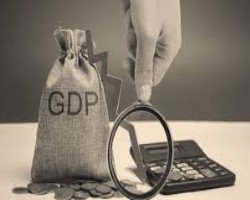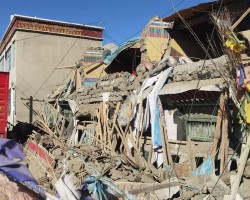Banking Current Affairs
TABLE OF CONTENTS |
| Economy |
|---|
|
|
|
Why in the News?
India's real Gross Domestic Product (GDP) growth is projected to slow to 6.4% in the financial year 2024-25, compared to 8.2% in 2023-24, as per the first advance estimates by the National Statistics Office (NSO). This marks the lowest GDP growth in four years. Key Takeaways: Economic Growth Trends: First Half vs. Second Half Growth: Growth in the first half of FY 2024-25: 6% Expected rebound in the second half: 6.8% Real Gross Value Added (GVA): Growth rate projected at 6.4%, down from 7.2% in 2023-24. Sectors with higher growth compared to last year: Agriculture: 3.8% (up from 1.4%) Public Administration, Defence, and Other Services: 9.1% (up from 7.8%) Sectors with Declining GVA Growth: Manufacturing: Expected to halve, from 9.9% to 5.3%. Mining and Quarrying: Down to 2.9% from 7.1%. Investment and Expenditure: Gross Fixed Capital Formation (GFCF): Growth projected at 6.4%, compared to 9% in 2023-24. Indicates a slowdown in fresh investments in the economy. Private Final Consumption: Growth expected to rise to 7.3% from 4% last year, showing increased household spending. Government Final Consumption: Projected to grow 4.1%, up from 2.5%. Sectoral Insights: Construction GVA: Growth estimated at 8.6%, compared to 9.9% in 2023-24. Trade, Hotels, Communication, and Broadcasting: Growth projected at 5.8%, down from 6.4%. Challenges Identified: Lower Fiscal Stimulus: Decline in government capital expenditure during Q2. Private sector investment remains sluggish despite favorable conditions. High Interest Rates: Stricter lending norms and tighter monetary policies affecting growth. Need for Budgetary Interventions: Budget 2025-26 expected to focus on reviving growth engines and addressing investment slowdown. Additional Observations: Advance estimates are preliminary and subject to revisions as better data becomes available. The Reserve Bank of India (RBI) revised its growth forecast to 6.6%, while the Finance Ministry expects growth to be around 6.5%. Expert Insights: Crisil Chief Economist Dharmakirti Joshi: Highlights "sluggish investment" and the slowdown in government spending as major contributors to deceleration. Emkay Global Financial Services: Notes that advance estimates may undergo significant revisions, given they are extrapolations of data up to November. |
| Environment |
|
|
|
Why in the News?
A devastating earthquake struck China’s remote Tibet region on Tuesday, killing 126 people and injuring 188 others, according to state media reports. The earthquake also caused tremors in neighboring Nepal’s capital Kathmandu and parts of India. Key Takeaways Earthquake Details: Location: Epicenter: Tingri County, about 80 km north of Mount Everest, near China’s border with Nepal. Tingri is a rural, high-altitude region with approximately 62,000 people. Magnitude: China Earthquake Networks Center (CENC): 6.8 U.S. Geological Survey (USGS): 7.1 Casualties and Damage: Deaths: 126 confirmed as of 7 p.m. Injuries: 188, including 28 in critical condition. Buildings: 3,609 houses collapsed. Responses and Relief Efforts: Rescue Operations: Rescuers worked in freezing temperatures, distributing blankets and aiding the injured. Footage showed rubble-strewn ruins in Tingri. Government Response: Chinese President Xi Jinping called for “all-out search and rescue efforts.” Emergency teams were dispatched to the affected regions. Impact on Neighboring Areas: Nepal: Tremors felt in Kathmandu and areas near Everest. India: Tremors were felt in parts of Bihar, but no injuries or significant damage were reported. Historical Context: The earthquake was the most powerful recorded in a 200-km radius in the last five years, according to CENC. Past incidents: December 2023: A quake in northwest China killed 148 people and displaced thousands. 2014: Over 600 people were killed in Yunnan province, making it one of China’s deadliest quakes. |
|
|
|
What is an Earthquake? |
| Appointments and Resigns |
|
|
|
Why in the News?
V. Narayanan, a prominent spacecraft and rocket propulsion expert, has been appointed as the new Chairman of ISRO (Indian Space Research Organisation). He will take over from S. Somanath on January 14, 2025. He has also been designated as the Secretary of the Department of Space and Chairman of the Space Commission. Key Takeaways 1. Appointment Details Approved by the Appointments Committee of the Cabinet (ACC). Tenure: Two years starting from January 14, 2025, or until further orders. Current Role: Director of the Liquid Propulsion Systems Centre (LPSC), Valiamala. 2. Professional Background Joined ISRO in 1984 and worked in multiple capacities. Specialized in solid propulsion systems for: Sounding Rockets Augmented Satellite Launch Vehicle (ASLV) Polar Satellite Launch Vehicle (PSLV) Contributed significantly to GSLV Mk-II and GSLV Mk-III development. 3. Contributions to Chandrayaan Missions Chandrayaan-2: Led the National Expert Committee to analyze the reasons for the hard landing of the lander. Chandrayaan-3: Delivered all propulsion systems, ensuring the mission's success. 4. Legacy of Predecessor (S. Somanath) Oversaw landmark missions during his tenure, including: Chandrayaan-3: Successful lunar landing. Aditya L1: Solar observation mission. Gaganyaan Mission: India's first manned spaceflight (developmental phase). Significance V. Narayanan's leadership is expected to further strengthen India's space research capabilities. His expertise in propulsion systems will be pivotal for upcoming missions like Gaganyaan, interplanetary explorations, and advancements in satellite technology. |
|
|
|
Indian Space Research Organisation (ISRO):
Formed: 15 August 1969 Preceding agency: INCOSPAR (1962–1969) Headquarters: Bengaluru, Karnataka Current Chairman: S. Somanath (10th Chairman of the Indian Space Research Organisation) Newly Appointed Chairman: V. Narayanan (11th Chairman of the Indian Space Research Organisation) Primary spaceports: Satish Dhawan Space Centre, Thumba Equatorial Rocket Launching Station, Kulasekarapattinam Spaceport |
|
<< 7-Jan-25
|
|
|


